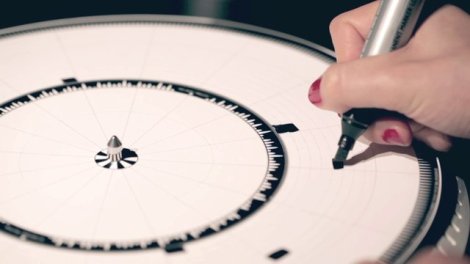
Anyone who has listened to any music from the 80s has heard the percussive effects of the infamous TR-808 drum machine. To the modern ear, it sounds like an antique. Being the most popular drum machine of all time means it must have some redeeming qualities, right?
[Moritz Simon Geist] decided he wanted nothing to do with the wimpy computer-based emulations of a TR-808. Instead, he chose a more mechanical version that puts robots inside a gigantic 808 enclosure to play snares, high hats, cowbells, and drums in time with any MIDI drum track.
[Moritz] calls his build the MR-808 and puts a real-life bass drum, snares, hats, toms, claps, and a ride into a 3.3 x 1.7 meter ( 10.8 x 5.5 foot) case. The sound triggers are handled by Max/Msp communicating with a pair of Arduinos to handle the solenoids and light effects. You can read more about the hardware setup in [Moritz]’ behind the scenes look.
After the break you can see the MR-808 in action, both alone and by providing the percussion for [Moritz]’ band. A very cool build that now cries out for an Arduinofied bassist placed into an overgrown TB-303 enclosure.
Continue reading “MR-808 Is A Mechanical Version Of The Most Famous Drum Machine” →
















